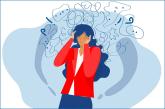Article

Adult ADHD: 6 studies of nonpharmacologic interventions
- Author:
- Melody Grace Santos, MD
- Daniel John Majarwitz, MD
- Sy Atezaz Saeed, MD, MS
Attention-deficit/hyperactivity disorder (ADHD) is a developmental disorder characterized by a persistent pattern of inattention, impulsivity, and...
Article

Adult ADHD: 6 studies of pharmacologic interventions
- Author:
- Melody Grace Santos, MD
- Daniel John Majarwitz, MD
- Sy Atezaz Saeed, MD, MS
FIRST OF 2 PARTS
New evidence can help guide the use of stimulants, viloxazine, guanfacine, and brexpiprazole.
Article

Treating PTSD: A review of 8 studies
- Author:
- Sy Atezaz Saeed, MD, MS
- Daniel John Majarwitz, MD
- Melody Grace Santos, MD
Posttraumatic stress disorder (PTSD) is a chronic and disabling psychiatric disorder.
Article

Generalized anxiety disorder: 8 studies of psychosocial interventions
- Author:
- Sy Atezaz Saeed, MD, MS
- Daniel John Majarwitz, MD
F or patients with generalized anxiety disorder (GAD), the intensity, duration, and frequency of an individual’s anxiety and worry are out of...
Article

Generalized anxiety disorder: 8 studies of biological interventions
- Author:
- Sy Atezaz Saeed, MD, MS
- Daniel John Majarwitz, MD
FIRST OF 2 PARTS: Evidence suggests several medications and rTMS may offer benefit.
